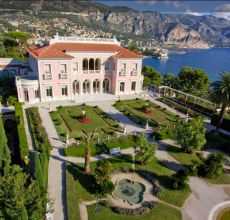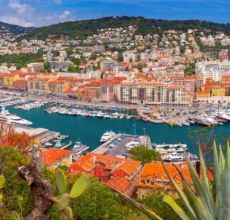Welcome to Paris + Plus !

SOME FAVOURITE MUSEUMS, GALLERIES AND SIGHTS IN AND AROUND NICE
Categories: Provence, South of France
Nice has a wealth of sights and attractions, and we looked at some of them in the previous story. The enormous number of museums, galleries and great attractions in Nice and its immediate vicinity showcase everything from art to archaeological…

NICE – JEWEL OF THE FRENCH RIVIERA
Categories: Provence
No matter how often you visit the city of Nice on the French Riviera, there are always plenty of delights to experience and explore. It wasn’t always the case though. For many years, much of Nice was run-down and the area close to the docks wa…

DISCOVER THE BEAUTIFUL MUSÉE RODIN IN PARIS
Categories: Paris City – Attractions, Paris
Without doubt, the Musée Rodin is one of the loveliest museums in Paris. This has as much to do with the beautiful garden as the fabulous collection itself. We first visited this museum back in the ‘70s, and revisit it as often as we can. It’s…

DISCOVER RUE CLER – A CELEBRATED MARKET STREET IN PARIS
Categories: Paris, Paris City – Food
Paris is famous for its many outdoor markets, and pretty much every arrondissement has at least one and there are supposedly around 80 such markets across the city. These are almost always temporary set-ups that operate a couple of mornings a w…
Categories
- Paris (105)
- Paris City – Attractions (78)
- Paris City – Food (12)
- Paris City – Shopping (9)
- Destinations by Navigo (15)
- Paris – Districts (20)
- Paris Region (Ile de France) (26)
- France (83)
- France – Regional Attractions (9)
- Alsace Lorraine (6)
- Bordeaux Region (8)
- Brittany and The Channel Islands (8)
- Burgundy (4)
- Champagne (4)
- Dordogne (5)
- Loire Valley (4)
- North East France (3)
- Normandy (9)
- Provence (22)
- Pyrenees (4)
- Rhone Valley (2)
- South West France (6)
- South of France (15)
- Italy (21)
- Lakes District (3)
- Puglia (5)
- Po Valley (2)
- Rome (1)
- Venice and Veneto (4)
- West Coast (9)
- United Kingdom (4)
- Other destinations (2)
- Uncategorized (5)

